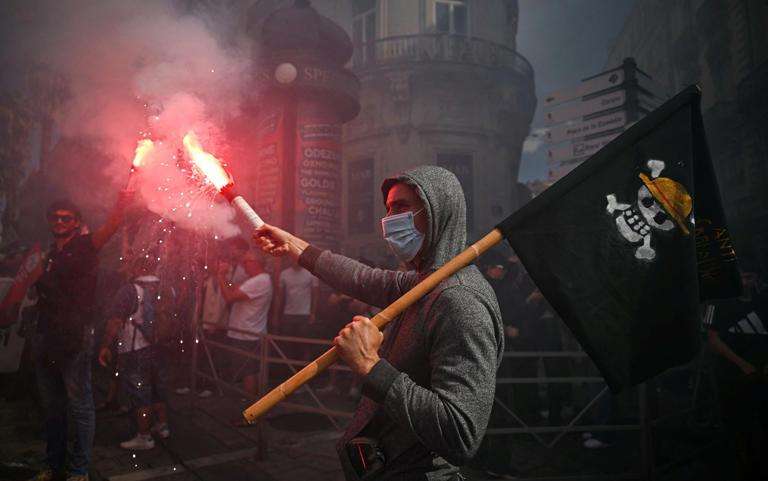Mandalay, once celebrated as the “City of Gold” with its gleaming pagodas and Buddhist burial sites, is now overwhelmed by the stench of death following a devastating earthquake.
Since a 7.7 magnitude quake struck near Myanmar’s former royal capital last Friday, an overwhelming number of bodies have accumulated, forcing mass cremations, a local resident reported.
The official death toll has surpassed 2,700, with over 4,500 people injured and hundreds still unaccounted for, according to Myanmar’s military chief. However, these figures are expected to rise as more victims are discovered.
In Mandalay, the country’s second-largest city, residents describe restless nights spent wandering the streets in despair, struggling with dwindling food and water supplies. A local student, who identified herself only as J, lost her aunt in the disaster. “Her body was only recovered two days later, on March 30,” she said.
Efforts to provide aid have been severely hindered by poor infrastructure and ongoing conflicts. Myanmar’s military, known for suppressing the true scale of national crises, has struggled to coordinate relief. As rescuers gain access to collapsed buildings and remote areas, the death toll is expected to climb further.
J, a resident of Mandalay’s Mahaaungmyay district, described feeling dizzy from exhaustion due to the ongoing aftershocks and fear of further collapses. Many survivors have resorted to sleeping on the streets or in makeshift tents, unwilling to risk returning to unstable homes.
“I have seen many people, including myself, breaking down and crying in the streets,” she shared.
Despite the devastation, survivors continue to be found. The fire department reported rescuing 403 people in the past four days, while also recovering 259 bodies. However, the real number of casualties is believed to be much higher than official reports suggest.
During a televised speech on Tuesday, military chief Min Aung Hlaing warned that the death toll could exceed 3,000. Meanwhile, the US Geological Survey estimated that fatalities could surpass 10,000, given the location and scale of the disaster.
Children have been particularly traumatized. A local pastor, Ruate, recounted how his eight-year-old son had repeatedly burst into tears after witnessing the destruction in his neighborhood. The boy had been in his bedroom when the earthquake struck, with debris falling on him while his mother attended to his younger sister.
“Just yesterday, we saw bodies being pulled from the rubble in our area,” Ruate said, reflecting on the devastation in Mandalay’s Pyigyitagon district. “It’s heartbreaking. Myanmar has suffered so many disasters—both natural and man-made. People are exhausted, feeling hopeless and helpless.”
A Buddhist monk, living near Sky Villa—one of the worst-hit buildings, which collapsed from 12 stories to six—told the BBC that while some survivors were initially rescued, only lifeless bodies had been recovered in the past 24 hours.
“I hope this ends soon. There are still many bodies trapped inside—more than a hundred, I believe,” he said.
Crematoriums around Mandalay are overwhelmed, with authorities running out of body bags and essential supplies like food and drinking water.
The city, once a major hub for gold leaf production and tourism, has been struggling with rising poverty in recent years. The earthquake also impacted neighboring Thailand and China, but Myanmar has suffered the worst damage due to its ongoing civil war, economic collapse, and instability following the 2021 military coup.
On Tuesday, the country observed a minute of silence to honor the victims as part of a week-long national mourning. The military government ordered flags to be flown at half-mast and paused media broadcasts, urging citizens to pay their respects.
Even before the disaster, over 3.5 million people had been displaced within Myanmar. Many, particularly young people, have fled abroad to avoid military conscription, leaving fewer hands available for relief and reconstruction efforts.
International aid has begun to trickle in, with Russia and China—long-time supporters of Myanmar’s military regime—providing assistance and specialized personnel.
However, according to J, relief efforts remain sluggish.
“Rescue teams have been working non-stop for four days, and they’re exhausted. They need rest, too. But the destruction is so vast, and resources here are so limited that it’s difficult to manage the crisis efficiently,” she explained.
Despite the junta’s claims that all aid is welcome, humanitarian workers have reported difficulty accessing disaster-stricken areas. In Sagaing—the earthquake’s epicenter—local media reported that military authorities are requiring organizations to submit detailed lists of volunteers and supplies before being allowed to enter.
Human rights groups, including Amnesty International and Human Rights Watch, have urged the junta to grant unrestricted access to relief workers.
“Myanmar’s military still rules through fear, even in the aftermath of a catastrophic disaster,” said Bryony Lau, Deputy Asia Director at Human Rights Watch. “They must break from their past practices and ensure that life-saving aid reaches those in desperate need.”
The junta has also faced international criticism for continuing military operations against villages, even as the nation reels from the earthquake’s devastation.

_7.jpg)

_8.jpg)




.svg)


